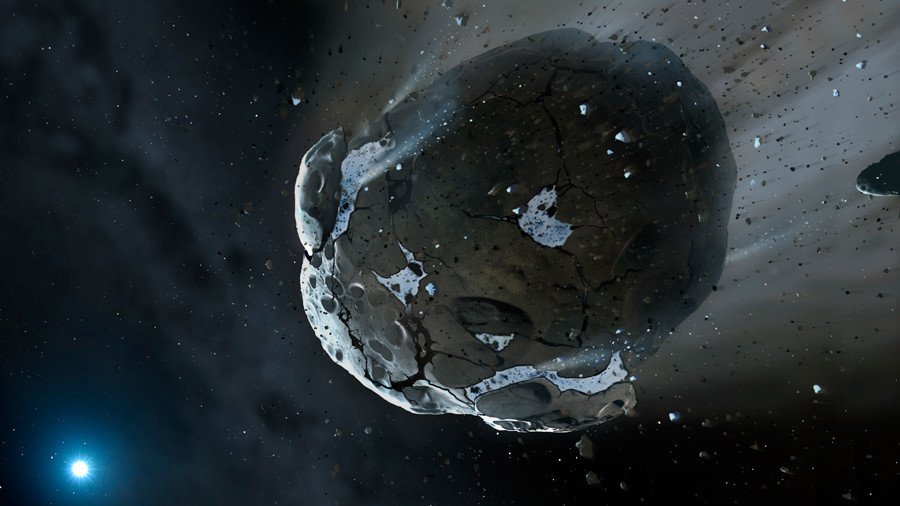‘Close shave:’ Russian astronomers visualize large asteroid flying past Earth next month (VIDEO)

A team of Russian astronomers has created a detailed visual scenario of what is likely to happen when a fairly large asteroid, called 3200 Phaethon, flies past the Earth in a close shave next month. Take a sneak peek at the dazzling video.
On December 17, this asteroid, measuring nearly 5 kilometers (3.1 miles) in diameter, will be approaching our planet. It will fly some 10 million kilometers from Earth – “quite close, by space standards,” according to the astronomer community at the Immanuel Kant Baltic Federal University in Russia’s Kaliningrad.
3200 Phaethon takes its name from the Greek legend of Phaethon, a demigod who was once allowed to drive the sun chariot for one day. The asteroid Phaethon' unusual orbit brings it closer to the Sun than any other named asteroid, Russian astronomers say. In the Phaethon’s case, it’s a record 20 million km at one point. Mercury, the planet closest to the Sun, orbits it at a distance of 46 million km.
The asteroid is also accompanied by the Geminids meteor shower, whose activity will hit its peak on December 13-14, when up to a hundred meteors flicker in the sky and burn down.
This meteor shower is visible every year. The asteroid, 3200 Phaethon, has also had flown past the Earth a number of times, scientists say.
"Apparently, this asteroid was once a much bigger object, but its many approaches to the Sun have caused it to crumble into smaller pieces which eventually formed this meteor shower. If so, the asteroid itself could be the residue of a comet nucleus. The asteroid’s extremely elongated orbit, thanks to which it sometimes gets to the Sun closer than Mercury and it sometimes moves away farther than Mars, is another argument in favor of this theory," the astronomer community at the Immanuel Kant Baltic Federal University said on its website.













